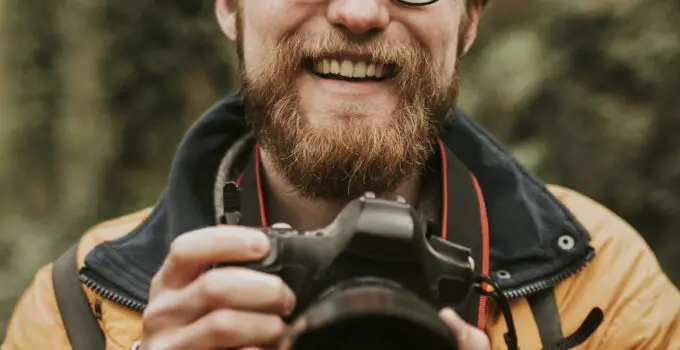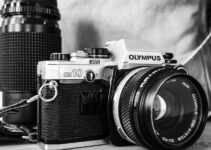Have you ever wondered what the real purpose of a camera bag is? Beyond just carrying your camera, a camera bag serves several crucial functions that every photographer should know about.
A camera bag provides essential protection for your gear, keeps everything organized, and ensures you’re always ready for the perfect shot.
Renowned photographer Ansel Adams always emphasized the importance of protecting one’s equipment to achieve the best results.
But there’s much more to learn about why a camera bag is an indispensable tool for photographers.
Let’s delve deeper into the myriad reasons that make a camera bag an essential part of any photographer’s kit.
Turn backpack into a camera bag.
What is the purpose of camera bag?
A camera bag is designed to protect and organize photography equipment. Its primary purpose is to safeguard cameras, lenses, and accessories from physical damage, dust, and moisture.
Camera bags are typically padded and compartmentalized, providing cushioning and preventing items from colliding during transport.
They often include adjustable dividers to customize the interior space according to specific gear needs.
Additionally, camera bags enhance portability and convenience for photographers. They allow for easy access to equipment, facilitating quick lens changes and efficient setup during shoots.
Many camera bags also feature extra pockets for storing memory cards, batteries, filters, and personal items.
Some bags are designed for specific environments, such as rugged outdoor conditions or urban settings, offering additional features like weatherproof materials, reinforced structures, and ergonomic straps for comfortable carrying.
Overall, a camera bag is an essential accessory for photographers, ensuring their equipment remains organized, protected, and ready for use.
Is it worth to have camera bag?
Yes, having a camera bag is definitely worth it for photographers.
A camera bag provides essential protection for expensive and delicate photography equipment, guarding against physical damage, dust, and moisture. This is crucial in ensuring the longevity and optimal performance of cameras, lenses, and accessories.
Additionally, camera bags offer organization and convenience.
With padded compartments and adjustable dividers, photographers can keep their gear neatly arranged, making it easy to find and access items quickly during shoots.
This level of organization enhances efficiency and workflow, especially in fast-paced or dynamic shooting environments.
Camera bags are also designed for comfort and portability.
Ergonomic straps, weatherproof materials, and rugged construction make them suitable for various conditions, whether for urban exploration or outdoor adventures.
Investing in a quality camera bag means investing in the protection, organization, and ease of transporting photography equipment, ultimately enhancing the overall photography experience.
Here, is it safe buying geographic national camera bag.
How to know if camera bag is fullfilling your purpose?
To determine if a camera bag is fulfilling your purpose, consider the following factors:

- Protection: Ensure the bag has adequate padding and durable materials to protect your gear from physical damage, dust, and moisture.
- Capacity: Check if the bag can comfortably accommodate all your essential equipment, including the camera body, lenses, and accessories, without overcrowding.
- Organization: Look for customizable compartments and dividers that allow you to organize your gear efficiently, ensuring easy access and preventing items from shifting during transport.
- Comfort: Assess the bag’s ergonomic features, such as padded straps and back support, to ensure it is comfortable to carry, especially for long periods.
- Durability: Evaluate the quality of the materials and construction to ensure the bag can withstand regular use and various environmental conditions.
- Accessibility: Ensure the bag provides quick and convenient access to your gear, allowing you to retrieve items easily during shoots.
By evaluating these aspects, you can determine if the camera bag meets your specific needs and enhances your photography experience.
13 purposes that a camera bag fullfill
1. Protection from Physical Damage
A camera bag is primarily designed to protect delicate photography equipment from physical damage. Cameras and lenses are vulnerable to impacts, drops, and scratches.
The padded compartments and reinforced walls of a camera bag absorb shocks and cushion the equipment, preventing breakage and wear.
The exterior materials are often rugged and resistant to abrasions, ensuring that even in rough environments, the gear inside remains safe.
This protection extends the lifespan of the equipment, saving photographers from costly repairs or replacements.
2. Dust and Moisture Shield
Photographic gear is sensitive to dust and moisture, which can affect functionality and image quality.
Camera bags are made with materials that resist dust infiltration and offer water resistance or waterproofing. Sealed zippers and tight closures keep out dust and dirt, while weatherproof coatings or rain covers protect against moisture.
This feature is crucial for photographers working in diverse environments, ensuring their equipment remains clean and dry.
3. Organized Storage
Camera bags come with various compartments and adjustable dividers to keep gear organized.
This prevents items from clashing and allows photographers to find what they need quickly. Each compartment can be customized to fit different lenses, bodies, and accessories, making it easy to pack efficiently.
Organized storage not only saves time during shoots but also reduces the risk of losing or damaging small items like memory cards and batteries.
4. Easy Accessibility
Quick and easy access to equipment is essential during shoots.
Camera bags are designed with strategically placed openings and zippers to allow photographers to retrieve gear quickly without unpacking the entire bag.
Some bags feature side or top access panels, while others have modular designs that let photographers access specific compartments swiftly. This accessibility enhances efficiency, especially in dynamic or fast-paced shooting scenarios.
5. Comfort and Ergonomics
Carrying heavy camera gear can be strenuous, so camera bags are designed with ergonomics in mind.
Padded shoulder straps, back supports, and adjustable harnesses distribute weight evenly, reducing strain on the back and shoulders.
Here, can a camera bag be a carry on.
Some bags also feature breathable materials and ventilation channels to enhance comfort during long shoots or hikes. Ergonomic designs ensure that photographers can carry their gear comfortably for extended periods.
6. Versatility
Camera bags are versatile, catering to various types of photography and environments.
Some bags convert from backpacks to shoulder bags, while others offer modular compartments that can be rearranged or removed.
This versatility allows photographers to adapt their bag to different shooting scenarios, whether it’s a studio session, an outdoor adventure, or an urban exploration. Versatile designs make camera bags suitable for a wide range of applications.
7. Portability
Portability is a key feature of camera bags, allowing photographers to transport their gear easily.
Compact designs, lightweight materials, and ergonomic handles make camera bags easy to carry, whether by hand, on the shoulder, or as a backpack.
Some bags also come with trolley sleeves for easy attachment to rolling luggage. Portability ensures that photographers can travel with their gear without hassle, making it convenient for on-the-go shoots.
8. Security Features
Security is a critical concern for photographers, especially when traveling.
Camera bags often come with security features such as lockable zippers, hidden compartments, and anti-theft designs. Some bags include RFID-blocking pockets to protect against electronic theft.
These security measures provide peace of mind, ensuring that valuable equipment remains safe from theft or unauthorized access.
9. Customizability
Customizable camera bags allow photographers to tailor the interior layout to their specific needs.
Removable and adjustable dividers, pockets, and compartments let photographers organize their gear according to their preferences.
This flexibility ensures that each piece of equipment has a dedicated space, reducing clutter and enhancing accessibility. Customizable designs cater to the unique needs of different photographers, from hobbyists to professionals.
10. Aesthetic Appeal
Camera bags are not only functional but also aesthetically appealing. They come in various styles, colors, and designs to match personal preferences and professional requirements.
Sleek and professional designs are suitable for corporate settings, while rugged and stylish options cater to adventurous photographers.
Aesthetic appeal ensures that photographers can carry their gear in a bag that reflects their style and professional image.
11. Additional Storage for Personal Items
Many camera bags include extra compartments for personal items such as smartphones, wallets, keys, and tablets.
This additional storage makes it convenient for photographers to carry all their essentials in one bag, reducing the need for multiple bags.
Separate compartments for personal items ensure that they are easily accessible and do not interfere with the camera gear, enhancing overall convenience.
12. Protection Against Environmental Elements
Beyond dust and moisture, camera bags protect gear from various environmental elements like extreme temperatures, sand, and snow.
Insulated designs and weatherproof materials ensure that equipment remains unaffected by harsh conditions. Some bags also offer UV protection to prevent damage from prolonged sun exposure.
This comprehensive protection makes camera bags suitable for diverse shooting environments, from deserts to mountains.
Here, how to clean lowepro camera bag?
13. Enhancing Professionalism
A well-designed camera bag enhances a photographer’s professionalism.
Organized and protected gear ensures that photographers are always prepared, which reflects positively on their reliability and attention to detail.
Professional-looking camera bags also make a good impression on clients and colleagues.
By keeping equipment secure, accessible, and in good condition, camera bags contribute to a photographer’s overall professionalism and efficiency.
7 benefits of camera bag
A camera bag offers numerous benefits to photographers, including:
- Protection: It safeguards cameras, lenses, and accessories from physical damage, dust, and moisture, ensuring longevity and optimal performance.
- Organization: Padded compartments and adjustable dividers keep gear neatly arranged, facilitating quick access and efficient workflow during shoots.
- Portability: Ergonomic designs and comfortable straps make it easy to carry heavy equipment, enhancing mobility for on-the-go photography.
- Accessibility: Quick-access panels and strategically placed zippers allow photographers to retrieve gear swiftly, improving responsiveness in dynamic shooting environments.
- Versatility: Many camera bags are adaptable, with features like convertible designs and customizable interiors, catering to different types of photography and environments.
- Security: Lockable zippers, hidden compartments, and anti-theft features provide peace of mind by protecting valuable equipment from theft.
- Professionalism: A well-organized and aesthetically pleasing camera bag enhances a photographer’s professional image, making a positive impression on clients and colleagues.
These benefits collectively enhance the overall photography experience by ensuring equipment is protected, organized, and easily accessible.
7 features every camera bag needs to have
1. Padded Compartments
Padded compartments are crucial in a camera bag as they provide cushioning and protection for delicate photography equipment.

These compartments are typically lined with soft materials and reinforced with padding to absorb shocks and prevent damage from impacts or drops.
The padding ensures that cameras, lenses, and other accessories remain secure and do not shift around during transport, which could cause scratches or other damage.
Additionally, padded compartments can be customized with adjustable dividers, allowing photographers to tailor the interior layout to fit different gear sizes and configurations, ensuring that each piece of equipment has a snug and secure place.
2. Durable and Weather-Resistant Materials
A camera bag needs to be made from durable and weather-resistant materials to protect equipment from environmental elements such as rain, dust, and extreme temperatures.
High-quality fabrics like ballistic nylon or canvas, combined with weatherproof coatings, offer robust protection against harsh conditions.
Here, can a camera bag be a carry on?
Weather-resistant zippers and sealed seams further enhance the bag’s ability to keep moisture and dust out.
This durability ensures that the camera bag can withstand the rigors of frequent use and rough handling, making it suitable for various outdoor and urban shooting environments.
By choosing a camera bag with these features, photographers can be confident that their gear will remain safe and dry in unpredictable weather.
3. Customizable Dividers
Customizable dividers are essential in a camera bag because they provide flexibility in organizing the interior space.
These dividers are often padded and can be rearranged or removed to accommodate different types of equipment.
This customization allows photographers to create specific compartments for cameras, lenses, flashes, and other accessories, ensuring efficient use of space and easy access to gear.
Customizable dividers also help prevent equipment from moving around inside the bag, reducing the risk of damage.
This feature is particularly beneficial for photographers with diverse gear collections or those who frequently change their setup, as it allows for quick and easy reconfiguration of the bag’s interior.
4. Ergonomic Design
An ergonomic design is vital for a camera bag to ensure comfort during extended use.
Features such as padded shoulder straps, adjustable chest and waist straps, and breathable back panels distribute weight evenly and reduce strain on the back, shoulders, and neck.
Ergonomic designs also include contoured shapes that fit the body better, enhancing comfort during long shoots or hikes.
Additionally, some camera bags feature load-lifter straps and lumbar support for added comfort.
By prioritizing ergonomics, photographers can carry their gear more comfortably, reducing fatigue and improving mobility, which is especially important when working in the field for extended periods.
5. Quick-Access Panels
Quick-access panels are an important feature in a camera bag, providing photographers with immediate access to their gear.
These panels are strategically placed openings, often on the side or top of the bag, allowing for swift retrieval of cameras and lenses without having to open the entire bag.
This feature is particularly useful in dynamic shooting environments where quick lens changes or camera adjustments are necessary.
Quick-access panels help photographers capture fleeting moments without delay, enhancing their responsiveness and efficiency.
Additionally, these panels usually include secure closures to prevent accidental openings and ensure that the gear remains protected while not in use.
6. Security Features
Security features in a camera bag are essential to protect valuable photography equipment from theft and unauthorized access.
These features include lockable zippers, hidden pockets, and anti-theft designs such as slash-resistant materials and RFID-blocking compartments.
Lockable zippers allow photographers to secure the main compartments of the bag, deterring theft in crowded or public spaces.
Hidden pockets provide discreet storage for important items like passports, wallets, and memory cards.
RFID-blocking compartments protect against electronic theft of personal information stored on credit cards and IDs. These security measures offer peace of mind, especially when traveling or shooting in unfamiliar locations.
7. Additional Storage Pockets
Additional storage pockets are a key feature in a camera bag, providing space for personal items and smaller accessories.
These pockets can be internal or external and come in various sizes to accommodate items such as batteries, memory cards, filters, cables, smartphones, and tablets. Having dedicated pockets for these items ensures that they are easily accessible and do not interfere with the main camera gear.
External pockets often feature secure closures like zippers or Velcro, while internal pockets may include mesh or padded designs for added protection.
Additional storage pockets help keep photographers organized and ensure that all necessary items are within reach during shoots.
What if your camera bag doesn’t fullfill your camera gears needs
If your camera bag doesn’t fulfill your camera gear needs, it can significantly hinder your photography experience.
An inadequate bag may lack proper protection, risking damage to your equipment.
Insufficient padding or compartments can lead to scratched lenses or damaged cameras, affecting the quality and longevity of your gear.
Additionally, poor organization within the bag can cause frustration and delays during shoots, as you struggle to find or access specific items quickly.
Lack of ergonomic design can lead to discomfort and fatigue, especially during long shoots or while traveling.
Security concerns may also arise if the bag lacks essential features like lockable zippers or hidden compartments, increasing the risk of theft.
To address these issues, consider upgrading to a bag that offers better protection, organization, comfort, and security.
Investing in a high-quality camera bag tailored to your needs ensures your equipment is safe, accessible, and easy to transport.
Related faq’s
What are camera bags used for?
Camera bags are used to protect and organize photography equipment, such as cameras, lenses, and accessories.
They offer padded compartments to cushion gear from physical damage and feature weather-resistant materials to shield against dust and moisture.
Camera bags also provide quick access to equipment, enhancing efficiency during shoots.
Additional storage pockets accommodate personal items and smaller accessories, keeping everything organized and within reach. Ergonomic designs ensure comfortable carrying, even for extended periods.
Overall, camera bags are essential for safely transporting and efficiently accessing photography gear in various environments.
Is a camera bag important?
Yes, a camera bag is important for photographers. It protects expensive and delicate equipment from physical damage, dust, and moisture, ensuring longevity and optimal performance.
Camera bags also offer organized storage with padded compartments and adjustable dividers, making it easy to access gear quickly.
Ergonomic designs provide comfortable carrying, reducing strain during extended use. Additionally, security features like lockable zippers and hidden compartments safeguard against theft.
Overall, a camera bag is essential for safely transporting, protecting, and organizing photography equipment, enhancing the photographer’s efficiency and convenience.
Are camera bags still in style?
Yes, camera bags are still in style and continue to be popular among photographers.
They come in a variety of designs, colors, and materials to suit different preferences and needs.
Modern camera bags combine functionality with aesthetic appeal, offering stylish options that complement professional and casual attire.
With advancements in design, such as convertible styles and customizable interiors, camera bags remain a fashionable and practical choice for photographers.
They not only protect and organize equipment but also contribute to a polished and professional image, making them a timeless accessory in the photography community.
Does a camera bag protect the camera?
Yes, a camera bag provides essential protection for cameras. It shields them from physical damage, such as scratches, bumps, and impacts, which can occur during transportation or storage.
The padded compartments and durable materials of a camera bag absorb shocks and cushion the camera, preventing breakage or wear.
Additionally, camera bags often feature weather-resistant properties, guarding against dust, moisture, and environmental elements.
By keeping the camera securely enclosed and padded within the bag, it reduces the risk of damage and ensures the camera remains in good condition for extended use.
Conclusion:
In conclusion, the purpose of a camera bag is multifaceted and essential for photographers.
It primarily serves to protect valuable camera equipment from physical damage, dust, moisture, and environmental elements.
Additionally, camera bags offer organized storage, convenient access to gear, comfortable carrying options, and security features.
They play a crucial role in maintaining the longevity and optimal performance of cameras, lenses, and accessories.
Ultimately, a well-designed camera bag enhances the photography experience by ensuring equipment remains safe, accessible, and efficiently organized, making it an indispensable accessory for photographers of all levels.









